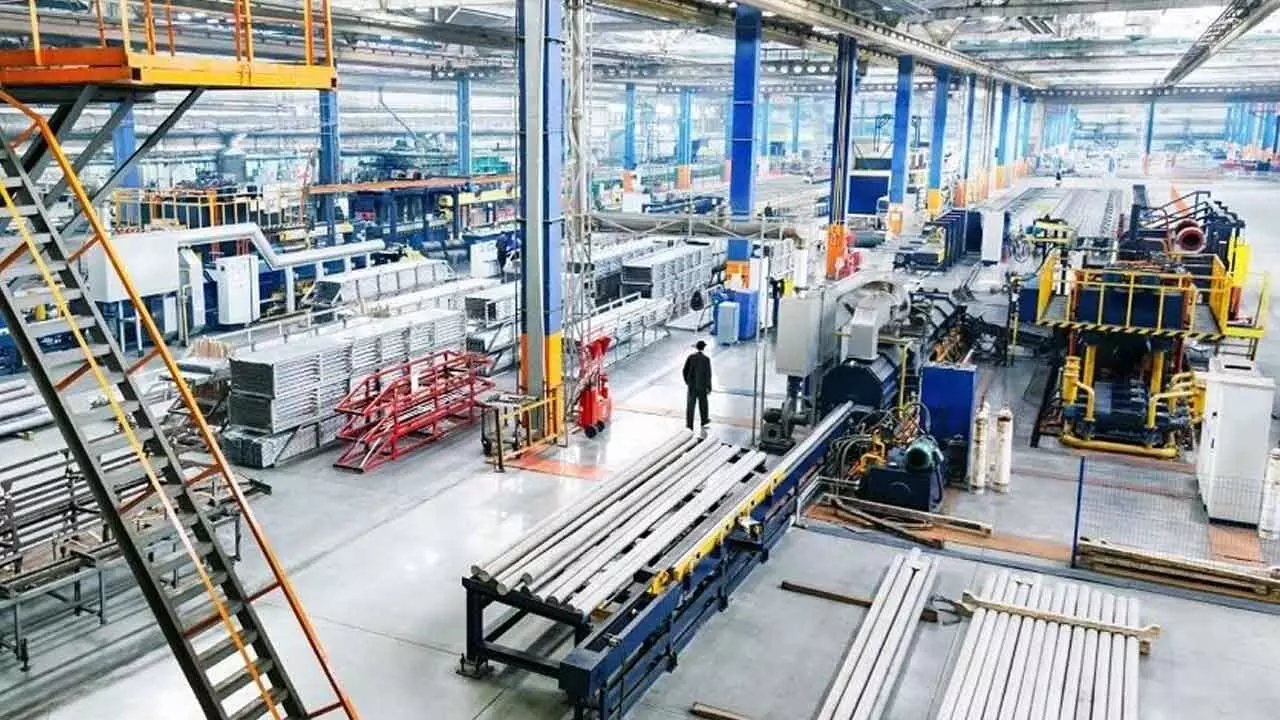Indian Industry Gaining Edge Post Tariffs
India could capture market share in labour-intensive sectors like apparel and electronics assembly
Indian Industry Gaining Edge Post Tariffs

India is poised to gain a manufacturing edge following the implementation of tariffs, particularly in sectors like electronics and light manufacturing, as companies seek alternatives to China. Lower tariffs on Indian products compared to competitors like China and Vietnam, coupled with increased business inquiries and export opportunities, indicate a potential for India's manufacturing sector to thrive.
While the automobile and electronic sectors within the India’s 18 per cent of U.S. export share will face increased costs due to reciprocal tariffs, the overall impact on India’s export trade is likely to be modest. The affected portions (less than three per cent of total exports combined) are to be considered as small, exemptions protect key sectors, and India’s competitive positioning and diversification strategies should cushion the blow. Thus, India’s export trade is not likely to be significantly affected, though vigilance in trade negotiations remains critical.
India faces a 26 per cent reciprocal tariff. This is notably lower than China (54 per cent), Taiwan (32 per cent), and even Vietnam (46 per cent), another manufacturing hub, though higher than the EU’s 20 per cent. India could capture market share in labour-intensive sectors like apparel and electronics assembly, where Vietnam and Taiwan have been strong.
Additionally, all countries face a universal 10 per cent baseline tariff on imports to the U.S., which stacks onto these reciprocal rates. For simplicity, let’s focus on the reciprocal tariffs as the primary differentiator, as they reflect the administration’s targeted approach to specific trade imbalances.
India’s manufacturing infrastructure lags behind China and the EU, potentially limiting its ability to absorb large-scale shifts quickly.
Tariff than in EU: The 26 per cent rate exceeds the EU’s 20 per cent, which could keep some importers tied to European suppliers, especially for high-value goods where quality trumps cost.
Because of the recent tariff updates by the U.S. Government, there will be the possibility of raising issues in global markets. Markets can see a significant movement and can increase the country's volatility index due to the U.S. being the biggest economy in the world. All countries actively participate in trade relations, import and export, with the U.S. The momentum in India's manufacturing sector has the strongest among top Asian economies in recent months. In March, the country’s Manufacturing Purchasing Managers’ Index (PMI) stood at 58.1, the highest in Asia by a wide margin, well ahead of regional peers like Indonesia (52.4) and China (51.2).
The average for the last three months was also 57.37, again, the highest among the major Asian countries. Japan, Singapore, Malaysia, Vietnam, and Taiwan either hovered around the threshold for stagnation or contracted.
Countries like South Korea and Japan, with large export-heavy, tech-oriented manufacturing bases, tend to be more sensitive to global demand cycles — unlike India’s more diversified and consumption-driven sectors such as textiles, auto ancillaries, and pharmaceuticals.
However, it may be too soon to celebrate the momentum just yet. India’s manufacturing momentum has run into a significant test: the US has imposed a uniform 26 per cent tariff on Indian exports, affecting nearly $75–78 billion, or about 18 per cent of India’s total exports, according to Mogre.
The CEO of Niti Aayog BVR Subrahmanyam said that India offers a cheaper alternative to Apple's iPhone manufacturing plans compared to most other countries. According to ICEA, mobile phone exports from India have crossed an all-time high of Rs two lakh crore in 2024-25, registering a 55 per cent growth over the Rs 1.29 lakh crore recorded in 2023-24.
Union Minister Ashwini Vaishnaw has said that iPhones alone accounted for Rs 1.5 lakh crore worth of exports in the smartphone segment.
Reciprocal tariffs signal that the U.S. will not tolerate what it sees as exploitative or unbalanced trade policies, such as selling below cost to kill competition or currency manipulation.
The goal is to pressure other countries into negotiating better deals or dropping their own barriers. Think of it as a tit-for-tat strategy-If you play fair, we’ll play fair; if not, we’ll match your game.
With the US tariff restructuring and changing of the world trade dynamics, India gets the strategic advantage as Indian exports face only 26 per cent tariffs compared to China's 145 per cent, potentially creating a $50 billion opportunity across diverse sectors and potentially making India a dominant leader in global trade.
The Federation of Indian Export Organization estimates that this shift could represent a $50 billion opportunity, which is not a one-time windfall but the very foundation for sustainable industrial development across multiple sectors.
The PHD Chamber of Commerce has projected minimal negative impacts on India's GDP (around 0.1 per cent), implying the country can absorb these changes without any major economic disruption.

